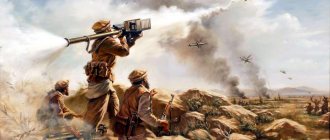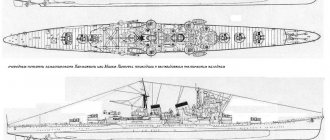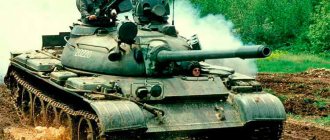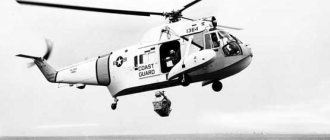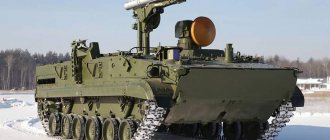According to generally accepted data, during the Afghan war of 1979 - 1989. Soviet aviation lost 332 or 333 helicopters. These figures refer to the Air Force of the Fortieth Army and do not include the losses of aviation of the border troops and the Central Asian Military District. If we take into account that the border troops aviation lost 62 helicopters, then the total losses of Soviet helicopters reach 400 units.
This list is compiled based on materials from open sources and is not complete. It lists 304 casualties. Thus, its completeness is approximately 75%. A number of losses described in the sources are not included because in these cases it is impossible to determine whether the loss was irreversible. For comparison: in total, the Fortieth Army lost 174 Mi-8, 28 Mi-6, 127 Mi-24, 4 Mi-9 / Mi-10; there is no information on the losses of border troops helicopters by type.
Statistics
The table shows the total number of helicopter losses by year. A. Lyakhovsky’s data for the Fortieth Army (332 helicopters) is compared with the losses listed in this list (299 helicopters). For 1985, 1988 and 1989, the list lists more losses than is supported by Lyakhovsky's data; Perhaps this is explained by the fact that the losses of border aviation were taken into account and are not included in the losses of the Fortieth Army. In other years, due to incomplete information on the list, there were fewer losses than there were according to Lyakhovsky.
| 1979 | 1980 | 1981 | 1982 | 1983 | 1984 | 1985 | 1986 | 1987 | 1988 | 1989 | TOGETHER | |
| Lyakhovsky | 3 | 39 | 22 | 33 | 28 | 49 | 49 | 44 | 49 | 14 | 3 | 332 |
| List | 0 | 35 | 18 | 27 | 20 | 34 | 58 | 41 | 48 | 19 | 4 | 304 |
Mi-24 helicopters
Mi-24 helicopters
Mi-24V from the 335th Regiment. Jalalabad, spring 1982
The high speed characteristics of the Mi-24 were achieved at the cost of a load on the main rotor that was one and a half times greater than that of the G8. In everyday extreme conditions (heat, high altitude, increased dust) this significantly affected control. Moreover, habitual piloting skills often turned out to be harmful and could lead to an accident. During takeoff and landing with an overweight propeller, a sharp movement of the handle caused a drawdown, they tried to hold the car with “step-throttle”, the throttle response of the “weakened” engines was not enough, and the helicopter fell to the ground. At low speeds on a hill or near the ground, the Mi-24 began to behave unusually. The directional control turned out to be insufficient; the reactive torque of the main rotor pulled the car into a spontaneous left turn and could fall into a helicopter spin. During energetic maneuvers with overload at high speeds and angles of attack, due to the disruption of the flow of the blades, the Mi-24 lifted its nose, going into a “pick-up” - pitching up with disobedience to control, after which it abruptly failed. The matter more than once ended in a rough landing on the wingtips and blocks. It was possible to avoid being “caught” by strictly observing the restrictions, but in battle there was no need to fly “lower and quieter.” During the “pick-up” and during an energetic recovery from a dive, impacts of the blades on the tail boom occurred. So, in August 1980, after storming the T24 caravan, commander Igor Kozovoy and his deputy Alatortsev returned to Fayzabad with their tails cut by blades. This incident had tragic consequences: while going on a control flight after repairs, Major Kozovoy came under fire from the DShK, the tail rotor with a shot off blade went into disarray, the damaged tail boom collapsed, and the out-of-control vehicle collapsed, burying the entire crew. Hero of the Soviet Union Vyacheslav Gainutdinov, a squadron commander from the G8, who took the place of an operator in the car of his schoolmate, also died in it.
Mi-24P captain Belyaev from the 205th Air Force is searching for the enemy near Kandahar. Autumn 1987
Mi-24P patrols the road above a transport convoy
At the exit from a dive with an angle of 20° and at a speed of 250 km/h, the Mi-24’s drawdown reached 200 m. When piloting at low altitudes and extreme conditions, when the pilot’s error could no longer be corrected, the energy and correctness of the maneuver became of utmost importance (it was common joke that it is “as easy as walking on a tightrope”). For the squadron from Kunduz, science cost six Mi-24Ds lost in the first year, mostly for non-combat reasons: crashed in the mountains due to fog and unexpected air currents, broken down when landing on slopes and in gorges.
The “aviation hooligans” demonstrated prohibited maneuvers to M. P. Tishchenko, General Designer of the Milevsky Design Bureau, who visited Afghanistan in April 1980. Having seen masterly aerobatics with very steep pitching, dashing corkscrew spirals and even an impossible “barrel roll” (it was performed on the Mi-8 by Major V. Kharitonov), the amazed General could not restrain himself: “Now I myself don’t understand how helicopters fly!” The impressions from the visit were immediate: already in the summer of 1980, modifications to the Mi-24 began, including re-adjustment of the engine fuel automatics by factory teams, designed to compensate for the drop in power in rarefied hot air, and the installation of dust protection devices (DPD). For a “special period” they raised the permissible temperature of the gases in front of the turbine, preferring the possibility of burnout to a lack of power. ROM “plugs,” which screened out sand and dust at the engine inlet, cleaned the air by 70–75%, reducing wear on the compressor blades by 2.5–3 times. The Mi-24s were equipped with them even before the G8s, although combat helicopters had less to operate from unprepared sites. The fact is that the installation of TVZ-117 engines on the Mi-24D at low throttle on the ground had higher speeds, sucked in sand more energetically and needed protection in the first place.
Since 1981, Mi-24Vs began to arrive in Afghanistan, equipped with new high-altitude TVZ-117V engines, which had 15–20% more power in hot highland conditions. During repairs, the Mi-24D was also equipped with these engines.
By the end of 1980, the helicopter group of the 40th Army was doubled, bringing it to 251 vehicles, which was four times the number of aircraft (the original proportion was 2:1). The main components of combat work were planned strikes and on-call missions during operations. Army aviation performed 33% of all “schedule work,” but its share of close air support was 75%. By this time, three types of operations of ground troops had taken shape: army, private and implementation, carried out, respectively, by the forces of a division, brigade and battalion with mandatory support from helicopters. Mi-24, using a rich combat arsenal, acted as a powerful shock “fist” in them. With mixed missile and bomb armament, a complex bomb-assault strike (BSA) was practiced: from a distance of 1200–1500 m, the pilot launched a NAR, and on approach opened fire from a machine gun, giving the operator the opportunity to accurately drop bombs.
Preparation of the Mi-24V helicopter from the 181st airborne division. The vehicle is equipped with FAB-250 M62 bombs and UB-32A-24 missile pods
Mi-24s cover a transport convoy on the approach to Kabul
And we bomb it!
Within a few days it became clear what had happened. It turns out that when four Soviet MiG-23s went on the attack, they themselves were hunted by a pair of Pakistani F-16s. The enemy was preparing to attack Soviet vehicles as soon as they dropped bombs and began to gain altitude. However, the unexpected maneuver of our pilots before the attack confused the Pakistanis - when our MiGs dropped sharply, the F-16s lost sight of them. Fearing that they would lose their prey, the Pakistanis rushed forward, but by that time the Soviet planes had already begun to climb and... dropped bombs. It was under this fan of bombs that the Pakistani pilots fell. Apparently, one of the “hundreds” hit one of the F-16s with such force that the plane simply fell apart in the air. However, there was another version: the leader of the F-16 pair could have been shot down by his wingman. Seeing that the Soviet planes were leaving the attack zone with a sharp maneuver, the Pakistani pilot could hurry up and launch a missile when his leader was in sight. The missile could be redirected to a closer target instead of the target. Such cases, by the way, were not uncommon. So, for example, in the 120th IAP, while intercepting flying targets, the political officer shot down his own squadron commander. Well, the reason for the nervousness of the Pakistanis was simple. Around the same time, another pair of Soviet MiG-23 fighters appeared over the scene, a cover group armed for air combat. The radar operation of these aircraft could have scared off the F-16. By the way, the pilot of the downed plane was lucky. He landed in an area controlled by dushmans and was taken to Pakistan at night. Of course, not a word was said in the Soviet press about this incident; TASS only reported that the air defense of the DRA army shot down a Pakistani plane that violated the border. Foreign media, on the contrary, wrote that Pakistani F-16s shot down a Soviet plane. However, later newspapers began to claim exactly the opposite that it was Soviet pilots who shot down a Pakistani fighter. And now, many years later, it is finally time to find out the truth about this complicated story.
Recommendations
- The Soviet war in Afghanistan: history and a harbinger of a future war? Archived May 21, 2012 Wayback Machine
- Aviation Security Network Archived March 3, 2016 Wayback Machine
- ^ a b c d f f
"Afghanistan - Aviation in local conflicts."
Skywar.ru
. Retrieved June 24, 2022. - Aviation Security Network Archived August 12, 2016 Wayback Machine
- Aviation Security Network Archived March 3, 2016 Wayback Machine
- Charlie Wilson's War, George Crile, 2003, Grove/Atlantic.
- Aviation Security Network Archived August 26, 2016 Wayback Machine
The plane was shot down!
The planes took off from the airfield and headed towards a given area. It was supposed to carry out bombing from a height of 4 km, so that the scattering of bombs would be as large as possible; but the planes themselves would remain outside the range of the dushmans’ air defense systems. To avoid interception by Pakistani aircraft, the MiG-23s took a route far from the Afghan border. But, as it turned out, not far enough. Soon the group entered the given area, and the leader noticed the village of Tani, located south of Khost, in the breaks in the clouds. It was a clearly visible landmark showing that the aircraft were in a given area. The MiGs closed formation and set out on a combat course. And at that moment, “Beryoza” squeaked in the headphones - a warning system that the plane was being irradiated either by the ground radar of some air defense system, or by the on-board radar of an enemy aircraft. But no one paid attention to the warning; no one cared about it. All four dropped altitude, rushed over the very edge of the mountain range - and then the fast cars rushed upward. And at that very moment, bombs flew down like steel rain, 16 pieces from each plane. Having dropped their deadly load, the Migi quickly rose to the clouds. The altimeter needle showed 6 km when suddenly something flashed brightly behind them. The presenter looked around - a torch was burning brightly in the sky, then something popped in the fire and a dark dot quickly rushed to the side. The canopy of the parachute began to sway. Apparently the catapult went off. But who is burning? After all, all Soviet MiG-23s were safe and sound. The group commander reported to the base that he saw an unknown aircraft on the ground burning out, and then a blue-gray F-16 jumped out of the clouds like a scalded one and, in afterburner and climbing, began to fly away towards the Pakistani border.
F-16 Fighting Falcon
American multirole light fighter of the fourth generation.
The F-16, due to its versatility and relatively low cost, is the most popular fourth-generation fighter. In the early 1980s, the United States supplied Pakistan with 40 F-16A fighters. Since the mid-1980s, Pakistani fighters have been actively operating in the area of the Afghan-Pakistani border, protecting the country's airspace from periodic incursions by Soviet and Afghan aircraft and periodically violating the border themselves. Magazine: War and Fatherland No. 12(53), December 2022 Category: Unknown conflicts of the 20th century Author: Ilya Kvashnin
Tags: USSR, war, plane, War and Fatherland, aviation, conflict, Pakistan, Afghan war, Afghanistan
- Back
- Forward
